Any links to online stores should be assumed to be affiliates. The company or PR agency provides all or most review samples. They have no control over my content, and I provide my honest opinion.
Today, Infinix announced two new phones, the flagship Zero Ultra and the Zero 20. I have had both phones for a couple of weeks, but I have mainly been using the Zero Ultra, which I have reviewed in more detail.
For the Infinix Zero 20, I have only spent a few hours using it to see what it is like.
Specification
- Display: 6.7 inches AMOLED 2400x1080P @ 90Hz
- Chipset: MediaTek Helio G99 (6nm)
- RAM: 8GB
- Storage: 256GB
- Rear Camera:
- 108 MP, (wide), PDAF
- 13 MP
- 2 MP
- Front Camera: 60 MP, (wide), AF, OIS
- OS: Android 12, XOS 12
- Battery: 4500 mAh
- Charging: 45W wired
Design
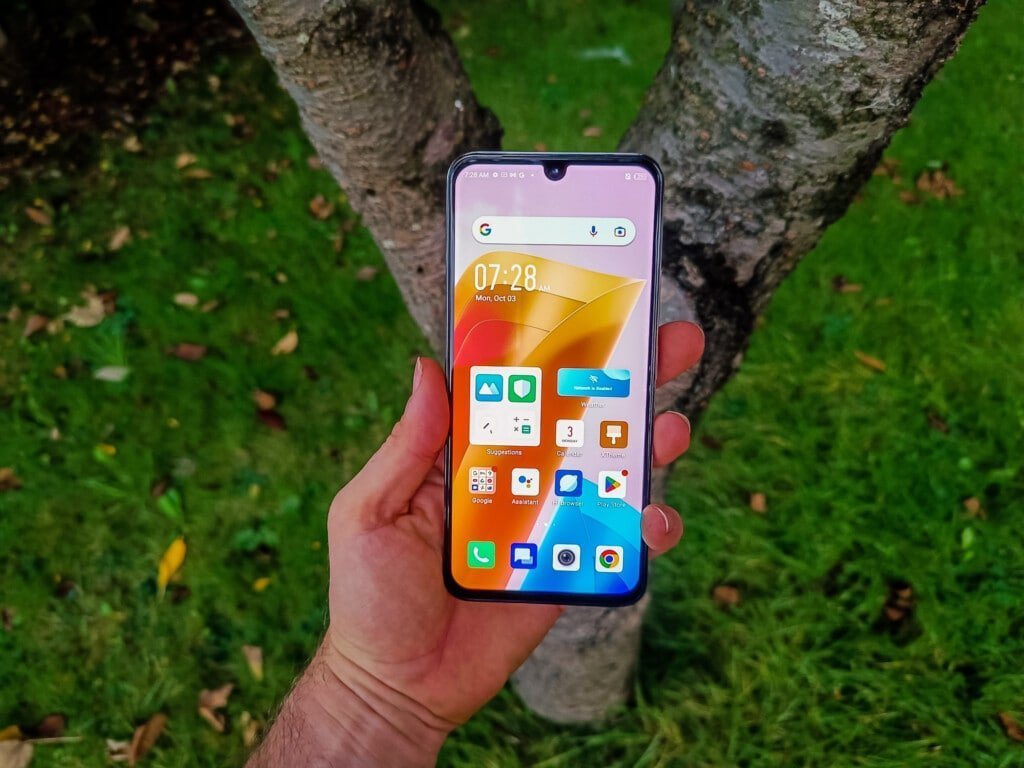
I have mixed feelings about the overall design of this phone. At first, I liked it, there is something a little different about it, and it sort of has an art deco aesthetic about it. The front and back are perfectly flat, as are the edges; it is only the corners that are curved. It also has quite a unique colourway with a sort of dual-tone matte finish, gold and yellow.
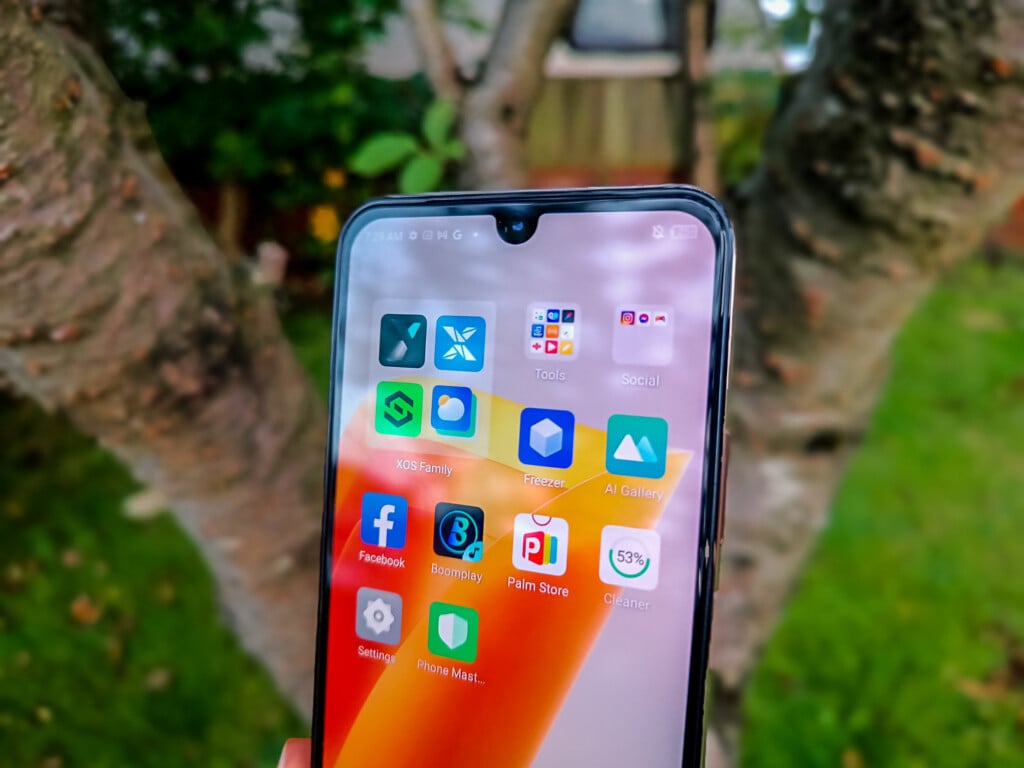
However, my initial positive impressions waned; it is not so much that the design or build is bad, it’s just that you can tell it is an affordable phone. It feels quite plasticy, the bezels look quite thick, and you have a notch, which is something I haven’t seen on an Android phone in a few years.
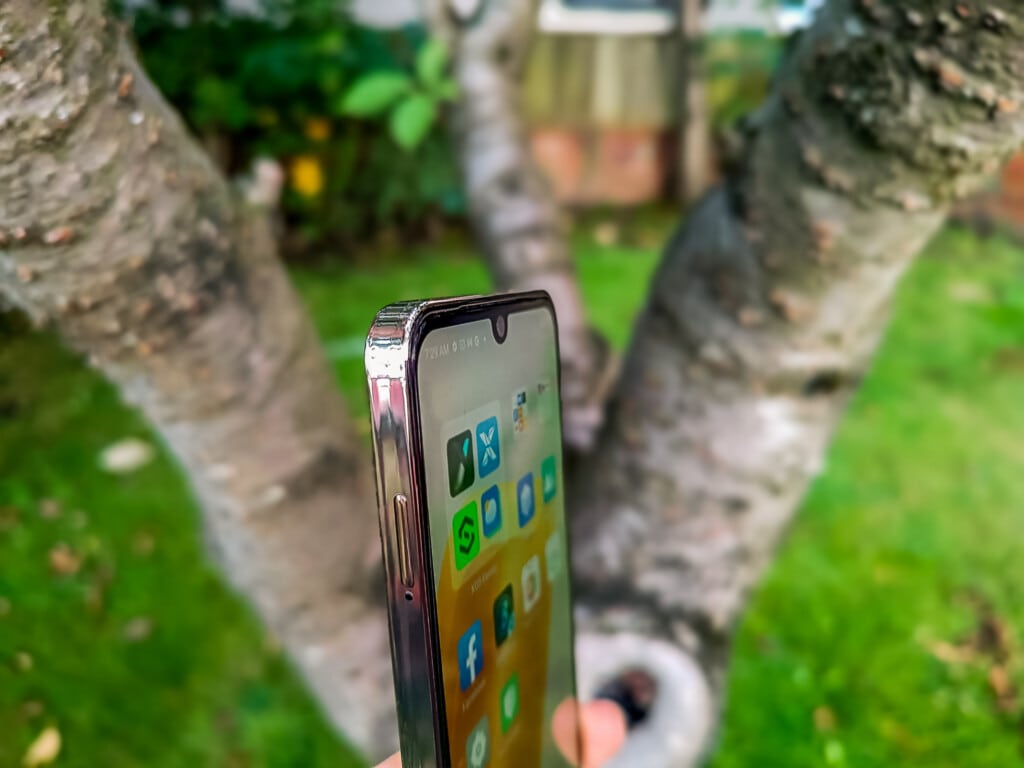
While a notch is not the most attractive, I wouldn’t hold it against this phone; there is barely any practical difference between a notch and a punch hole.
The camera bump is massive, and it is not like this phone is particularly thin in the first place.
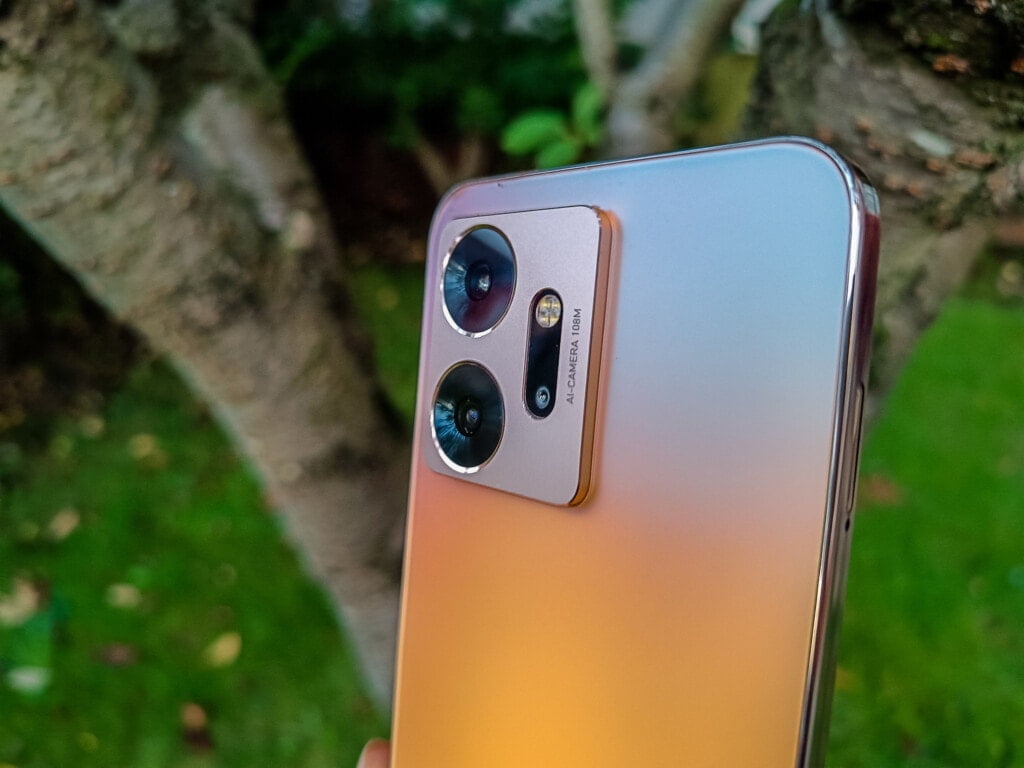
The 90Hz OLED display is decent for the price, my Pixel 6 has a 90Hz display, and I don’t really understand why people make so much of a fuss about 120Hz being essential.
The phone has a fingerprint sensor mounted on the power button and is about as accurate and fast as other phones with this style of sensor. Both the power button and volume rocker are plastic and have a little wiggle to them, making it feel quite cheap.
MediaTek Helio G99 Performance
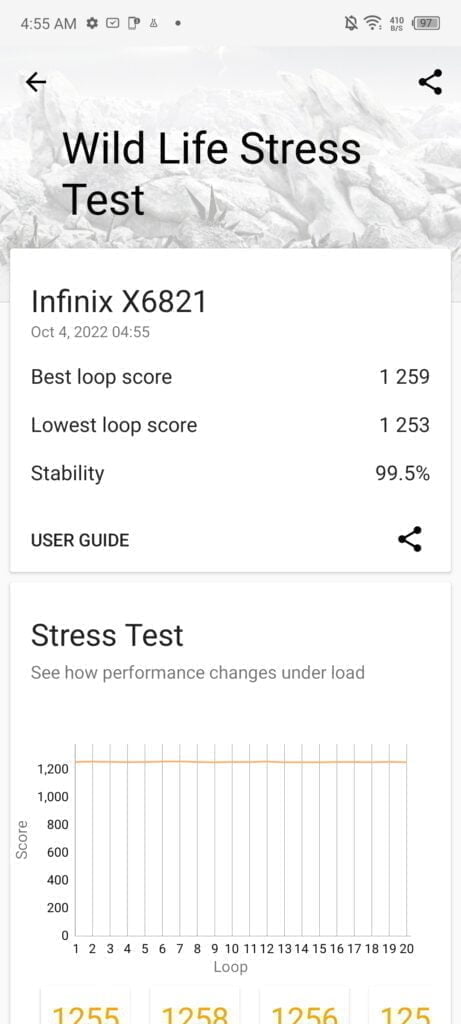
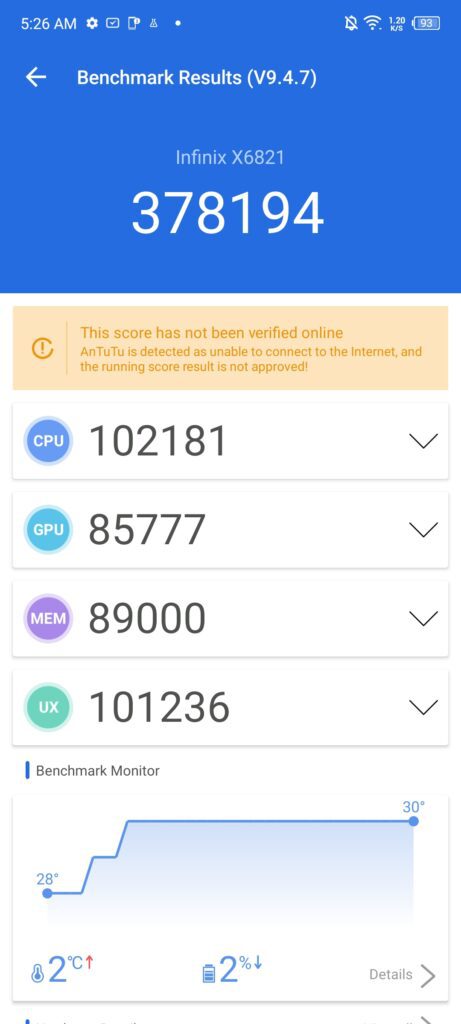
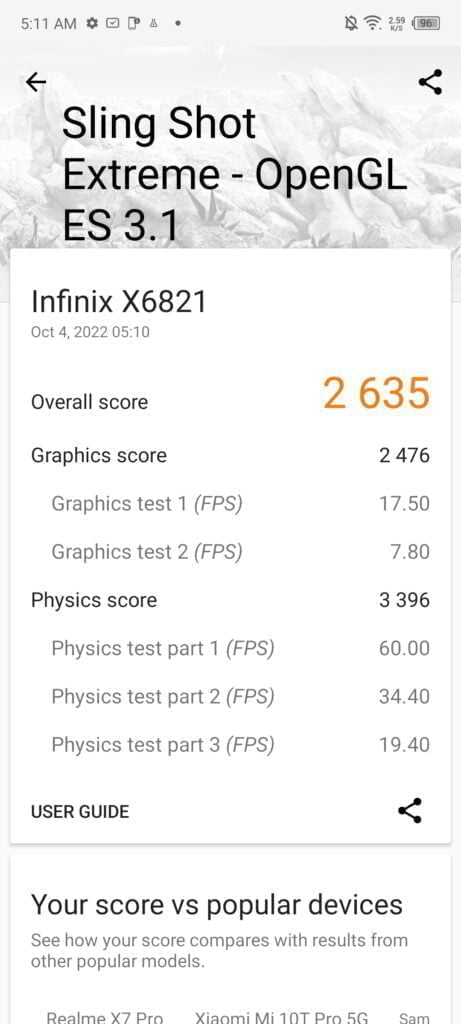
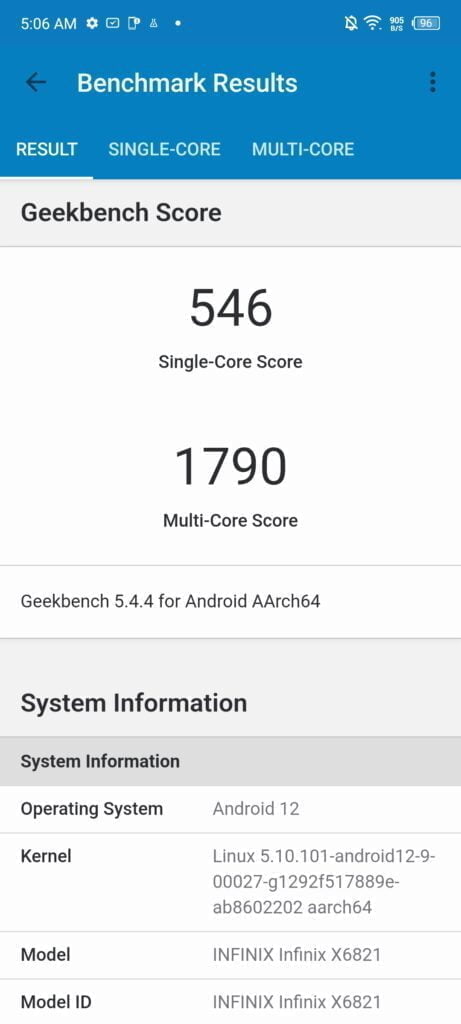
The MediaTek Helio G90 series feels like it has been dragged out for too long. The Helio G90T was an excellent chipset, and it felt like the first time Mediatek made good grounds against Qualcomm.
The Helio G95 was a small upgrade to the G90T. The G96 changed the GPU from the Mali-G76 MC4 to the Mali G57 MC2 and had small improvements for the lesser specs, such as display and camera support.
The Helio G99 is an incremental upgrade to the G95. The main difference is the newer, more power efficient 6nm fabrication process. The CPU then has a fractional frequency uplift.
The end result is a chipset with marginally better benchmarks than the 3-year-old Helio G9
Looking at some of the benchmarks I have done in the past:
For 3DMark, I tested the Relame 6 with Helio G90T, this was before Wildlife was launched. With Slingshot Extreme OpenGL, it scored 2537, while the Inifinix manages 2635, a 4% improvement.
The 3DMark Wildlife result puts this about level with the Qualcomm Snapdragon 695 which is used on similarly priced competing phones.
In Geekbench, Realme achieved 516/1650 vs 546/1790, which is a 6% and 8.5% improvement, respectively.
Thankfully, day-to-day performance is good and more than adequate for all day-to-day tasks. It isn’t going to be playing the most demanding games with the best settings, but it should still play most games perfectly well.
Camera
The camera is one of the main things I have not tested thoroughly. Considering the price of the phone, it comes with a good camera spec. You have a 108MP primary rear camera combined with two generic sensors, a 13 MP ultrawide and a mostly useless 2MP macro.
The front camera has an impressively large resolution of 60MP.
Infinix doesn’t reveal which 108MP camera sensor they have used, but as far as I am aware, it is just Samsung producing them, and the Samsung ISOCELL HM2 is used on several affordable phones, including the Realme 8 Pro, Redmi K40 Pro+ and Xiaomi Mi 10i.
With good lighting, the 108MP camera can take superb photos that will easily outclass the camera on many affordable phones. Colours are a little overexaggerated, but this generally means a more visually impressive photo which most people will likely prefer.
Like most affordable phones, low light performance is not particularly great.
Even though the chipset on this phone is technically better than the older G95, for some reason, MediaTek has reduced some of the camera support features. This is now limited to video recording at 2K@30FPS and no HEVC 10-bit recording.


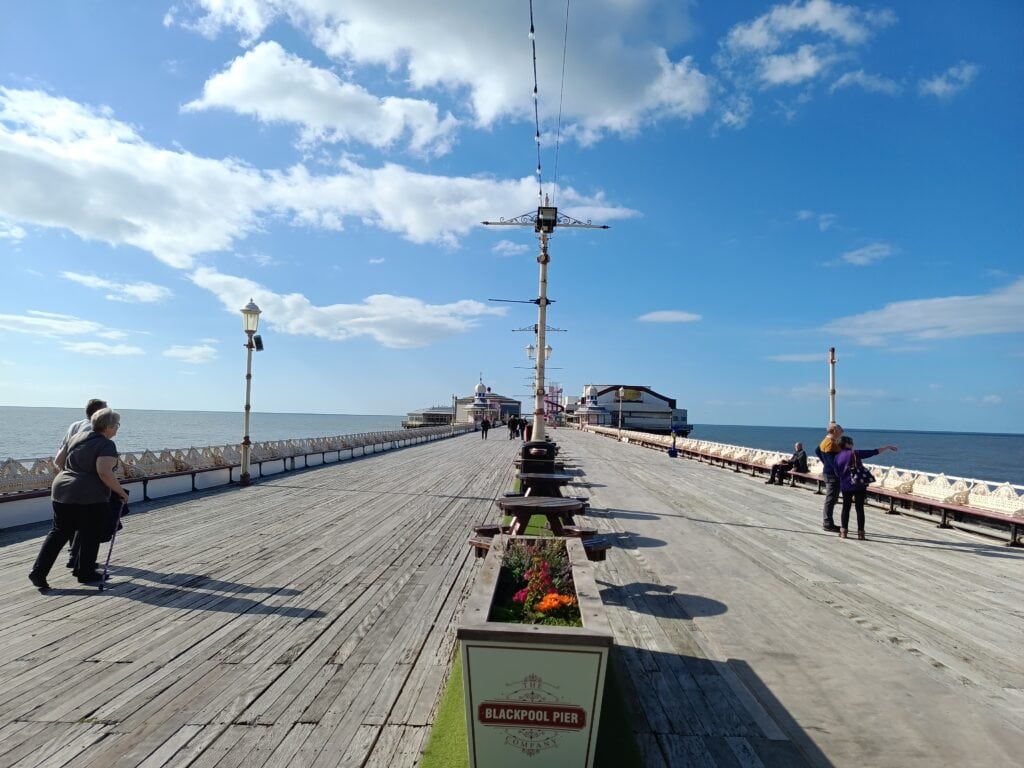





Price, Availability and Alternative Options
The press release states that the Zero 20 will cost around $270, with prices and availability varying by region, which is about as vague as you can get. I wouldn’t expect this phone to launch in the UK.
If it did launch in the UK, it would work out at around £240.
The 6GB/128GB Xiaomi POCO X4 Pro 5G is probably the best alternative option. It is priced at just £260. It has a 5G Snapdragon 695, 5000mAh battery, 6.67″ AMOLED display that runs at 120Hz, and it also has a 108MP primary camera.
The new POCO M5 is very similar to the Zero 20 with the same chipset and notched 90Hz display but less RAM and storage and a lower spec front and rear camera. This is currently on AliExpress for £195 for the 6GB/128GB model
The Realme 8 is only £199. The Helio G95 chipset isn’t much different; build quality feels better, but the overall specification is not as good.
The Realme 9 Pro is £300 and has a 5G Snapdragon 695, better build quality and display but a lower spec camera.
Overall
I mostly like this phone. The MediaTek Helio G99 is a perfectly good chipset for most people. It would be nice for a 5G chipset, but I still don’t get 5G where I live, so it is not the end of the world.
I think the camera is better than average for a phone at this price point.
I am torn with the overall aesthetic. I think my main issue with it is that the whole phone feels very plasticy.
In the UK, at least, I think this is a hard sell over the POCO X4 Pro 5G, which will have better brand recognition. The Qualcomm Snapdragon 695 performs about the same as the G99 but is 5G, and you have a 120Hz display and bigger battery.
Infinix Zero 20 Review Rating
Summary
The Infinix Zero 20 is generally a good phone. Performance is good for all day-to-day tasks, and it has a good camera for a phone at this price point. Depending on price and availability, it may struggle to compete with the popular POCO phones.
Overall
70%-
Overall - 70%70%
Pros
- Excellent camera at this price point
- G99 chipset may not be the best, but it is quite good for most tasks
Cons
- Cheap feeling built quality
I am James, a UK-based tech enthusiast and the Editor and Owner of Mighty Gadget, which I’ve proudly run since 2007. Passionate about all things technology, my expertise spans from computers and networking to mobile, wearables, and smart home devices.
As a fitness fanatic who loves running and cycling, I also have a keen interest in fitness-related technology, and I take every opportunity to cover this niche on my blog. My diverse interests allow me to bring a unique perspective to tech blogging, merging lifestyle, fitness, and the latest tech trends.
In my academic pursuits, I earned a BSc in Information Systems Design from UCLAN, before advancing my learning with a Master’s Degree in Computing. This advanced study also included Cisco CCNA accreditation, further demonstrating my commitment to understanding and staying ahead of the technology curve.
I’m proud to share that Vuelio has consistently ranked Mighty Gadget as one of the top technology blogs in the UK. With my dedication to technology and drive to share my insights, I aim to continue providing my readers with engaging and informative content.

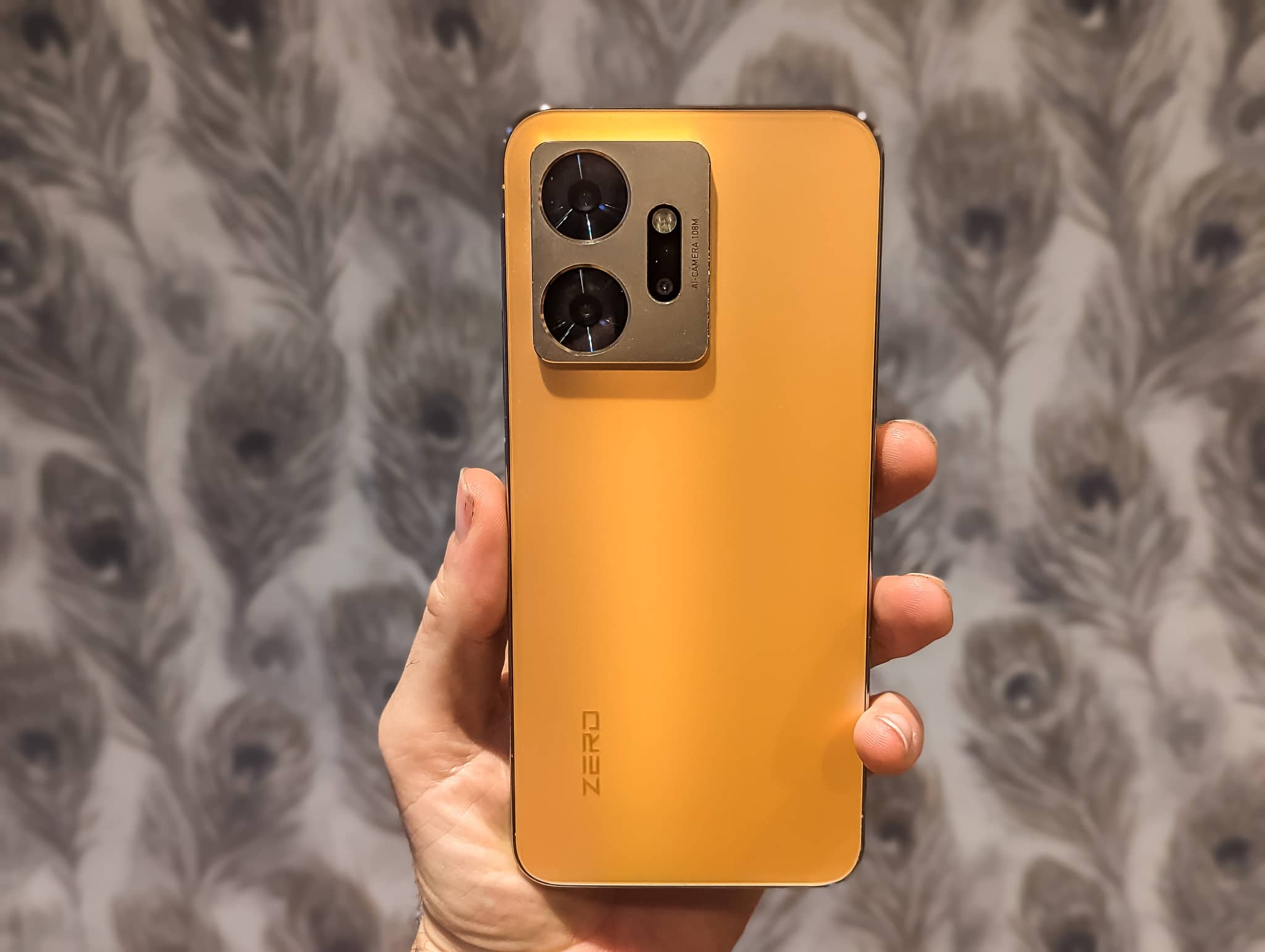
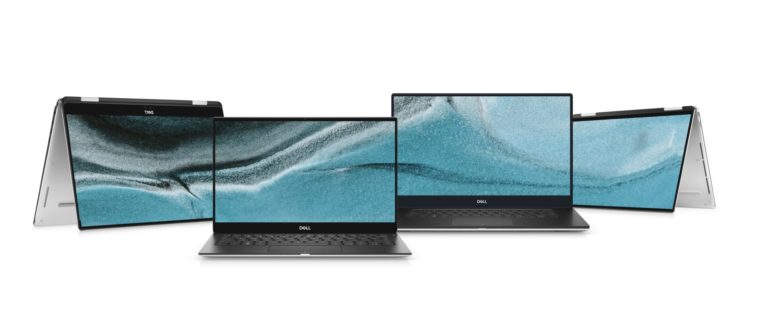
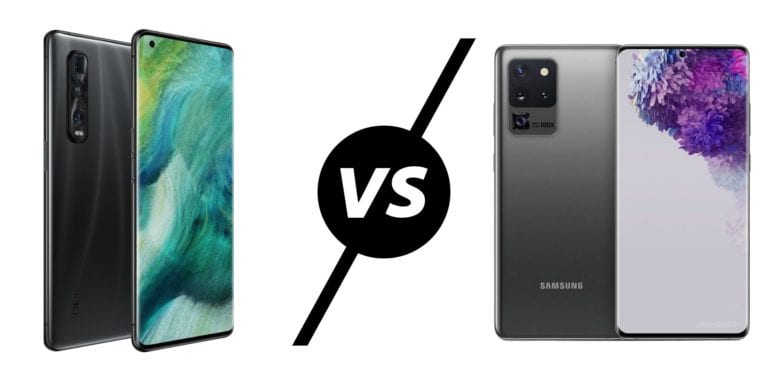
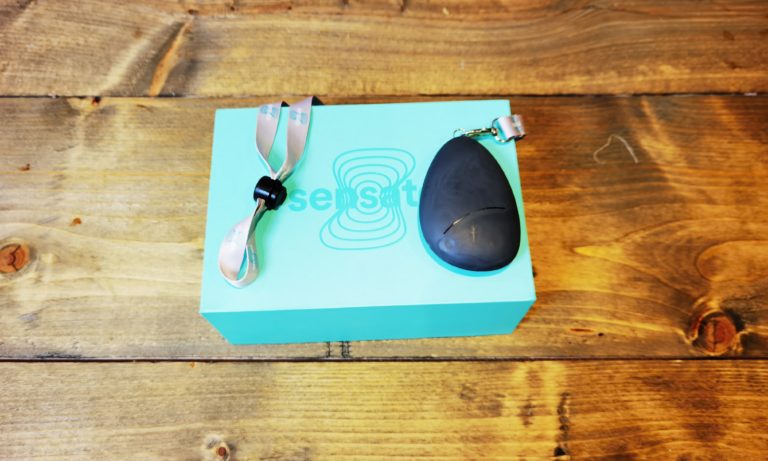


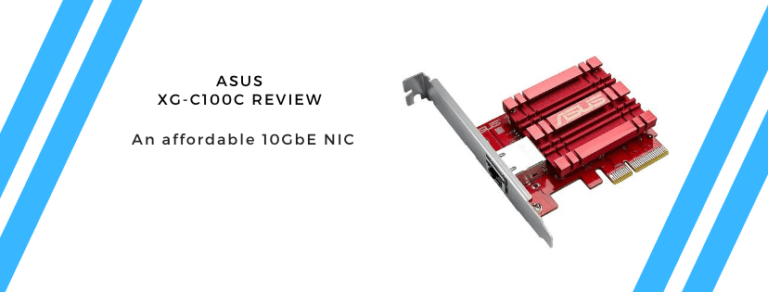
The camera setup of this Infinix Zero 20 smartphone is great, and I also like the fact that they have used a mediatek chipset for this smartphone.
The camera quality is just brilliant, and the Helio G99 processor is the best in this range!
I saw they the model 20 on TikTok 130.00